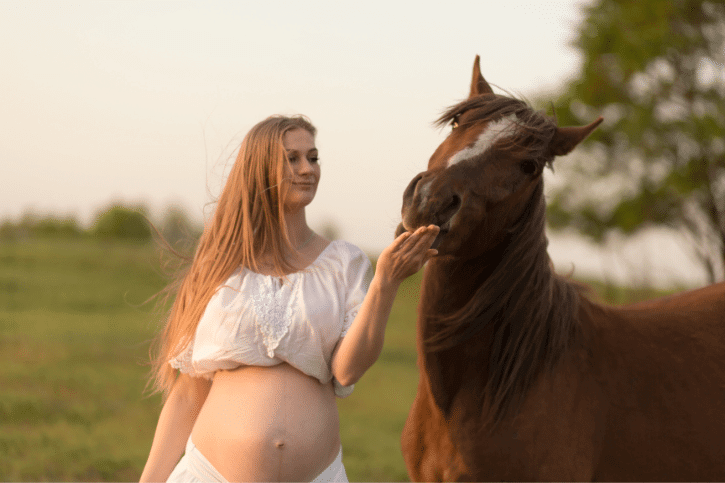Do Horses Have Belly Buttons?
The other day, I was at the barn with my three-year-old daughter, who played as I fed my horse.
She has been learning about body parts at school and came to show me her belly button.
She then pointed to my horse and asked where his was.
It was then that I realized I had no idea, and I decided I had to find out the answer to the question, “Do horses have belly buttons?”
Yes, horses do have belly buttons. Like all mammals, horses use an umbilical cord to receive nutrients in utero. Once born, the cord falls off, leaving a scar which we know as a belly button. Although they can have them, that doesn’t mean every horse’s belly button looks the same.
Since horses have belly buttons, where are they?
Can they have an innie or an outie?
Does a horse’s belly button close naturally, or does a vet need to clamp it like a human’s?
Can a horse’s belly button get infected, and if so, can it be treated?
For the answers to these questions, just keep reading.
Horse Belly Buttons
All mammals have belly buttons since they are the point of attachment for the umbilical cord in utero.
Once born, the umbilical cord falls off and leaves a scar known as the belly button.
Horses are no different; their bellybuttons are located about four inches in front of their genitalia on their stomachs.
After birth, the umbilical cord will fall off naturally as the foal stands.
Doing this will create an open sore that becomes scabbed over and falls off after around two to three weeks.
There is no need to clamp it as we do in humans; it will close independently.
This scab becomes the location of the belly button.
Like humans, horses can have either an innie or an outie, which occurs from how the skin heals around the umbilical wound.
As the foal grows, its fur will cover the area, and the belly button may no longer be visible, but it will never go away.
Can A Horses Belly Button Get Infected?
An infected belly button is called a “naval ill” and commonly occurs in foals.
The infection happens when a foal spends an extended amount of time laying down in bacterial ridden hay after birth or from overly aggressive cleaning and unsanitary handling of the open umbilical wound.
It can be difficult to diagnose if the location of the infection is on the interior umbilical walls.
Often the only way an owner knows there is a problem is when the foal presents with lameness or painful, hot, swollen joints.
To receive a diagnosis, you must have a vet perform a careful and thorough examination, preferably with an ultrasound.
They may also draw blood to identify the condition.
Without quick identification, bacteria will enter the bloodstream from the infection site and spread it throughout the foal’s body and into its joints and sheath.
After diagnosis, it is imperative to perform aggressive treatment, which may include surgically removing the abscess and treating the infection with antibiotics.
In some cases, the untreated umbilical infection can cause urine to drip out of the wound, causing more bacteria to accumulate and worsen the foal’s condition.
Fortunately, there is a high survival rate for foals who are treated promptly without any lasting repercussions.
Once the umbilical wound has healed, you no longer have to worry about infections.
Horse belly buttons are incredibly cool, and if your horse is calm enough, it may let you get a peek.
Chances are there is a bunch of fur covering it, but if you can gently push it aside, you can discover whether your horse has an innie or an outie.
Like all mammals, horses use an umbilical cord to get the nutrients and oxygen needed during gestation from the placenta.
Once they are born, the umbilical cord tears away as they stand, leaving a wound covered by a scab.
After a few weeks, this scab heals and falls off, revealing the newly formed belly button.
Its shape is determined by how the skin heals around the scab.
If the foal is weak and can’t stand shortly after birth, they may expose the wound to bacteria found in the hay on the stall floor.
This bacteria creates an infection known as “naval ill.”
Naval Ill can also occur from rough or unsanitary handling from the owner of the unhealed umbilical wound.
It can be hard to diagnose naval ill, but swelling and heat around the area are good indicators of infection.
Immediate treatment is necessary through surgery and antibiotic, and foals have a great chance of recovery after receiving the correct treatment.
Now that you’ve learned everything there is to know about horse belly buttons, you can tell your friends just how cool they are.
Chances are if they’re anything like me, they never considered that horses could and do have belly buttons.
